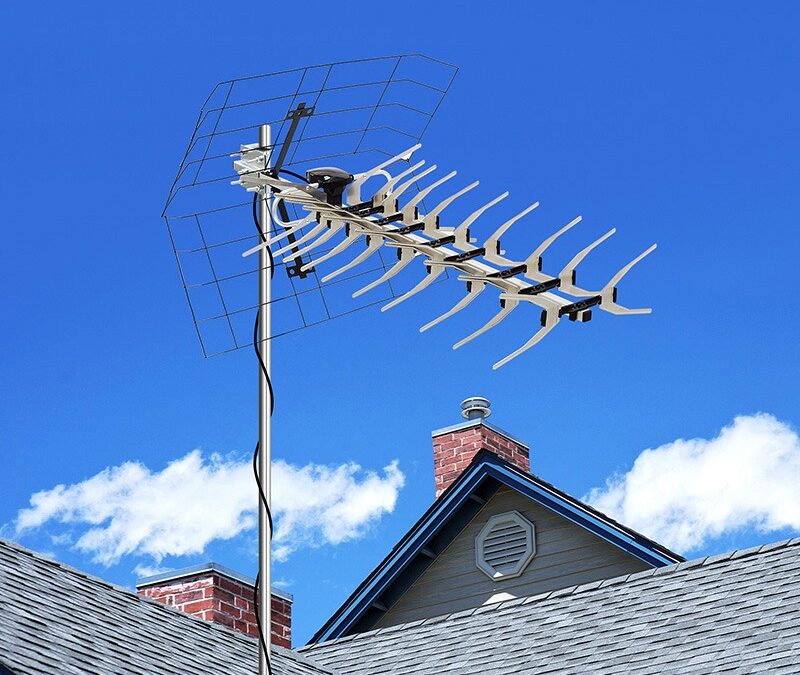Yagi antennas are called as Yagi-Uda antennas. It was invented by Japanese inventors for common uses. A Yagi antenna is normally used in devices such as ham radio, TV, and Wi-Fi devices. It can be used as a connecting antenna between a site and Wi-Fi access point.
The main element in a Yagi antenna is a dipole. A Reflector is usually present behind the driven element. Reflector adds 4 DB to 5 DB of forward gain. Not every device has a reflector. If any extra antenna is added to an antenna, it will get a gain of 1 DB.
Some parasitic elements can be added to the main element to change the performance of an antenna. The phase and amplitude of the signal depending on the spacing and size of the parasitic elements and their location connected to the driven element.
In this article, we will discuss everything about the Yagi antenna, its characteristics, benefits, and drawbacks in detail.
Construction of a Yagi antenna
Normally, a Yagi antenna has 3 major elements that form its main structure. These elements are driven elements which are a half-wave folded dipole, a director, and a reflector.
The structure includes one driven element and a reflector whereas directors can be multiple. The arrangement of active and parasitic elements in a High Gain Dual Stacked Yagi Antenna is known as an array. A dipole is normally a metal rod that acts as an active element as external feeding is offered to it with transmission lines.
Parasitic elements are metallic rods that are arranged parallel in the line of sight orientation concerning the driven elements. All the elements are placed on a center rod that acts as a horizontal support.
Characteristics of a Yagi antenna
Yagi antenna has 3 elements in an array namely a driven, reflector, and a single director.
- This antenna provides unidirectional directivity.
- The gain given by the Yagi antenna is normally 8 Db with front to back ratio of around 20 DB.
- This antenna offers moderate unidirectional directivity.
Benefits of a Yagi Antenna
- Yagi antennas are directional antennas and have a 50-degree to 70-degree beam width. The various benefits of a Yagi antenna are:
- A high-gain yagi antenna is a directional antenna. It works in only one direction. Yagi antennas are perfect to gain lower-strength signals.
- The high gain of a Yagi Antenna is the main reason for its good range.
- The physical size of a Yagi antenna is larger than other kinds of antennas. Because of the larger physical size, the Yagi antennas have the most gain as compared to other antennas such as Log periodic.
- Yagi antennas are more affordable than log periodic antennas. They are better than log periodic antennae. You can easily get a printed circuit board Yagi antenna in the market whereas other types of Yagi antennas can be made from simple rods positioned correctly.
- It is easy to build a Yagi antenna.
- Yagi antenna is lightweight and smaller than other types of antennas.
- It is easy to mount a Yagi antenna on vertical poles or any other pole with the help of standard mechanical fixings and equipment.
- Yagi antennas give a substantial increase in gain and directivity as compared to a plain dipole antenna.
- Yagi antenna provides a unidirectional radiation pattern which is good.
- This antenna offers wide bandwidth because of a folded dipole.
Disadvantages of a Yagi Antenna
We discussed various advantages of the Yagi antenna. Now, let us discuss the disadvantages of Yagi antennas in the below section:
- The frequency range or bandwidth in a Yagi antenna is limited as compared to other kinds of antennas.
- The antenna must be very long to get a high gain level. Even after using a very long antenna, the gain is limited to about 6-9 dB. You will still need one more Yagi antenna in a line to increase the gain.
- Yagi antennas get a degradation of their electrical characteristics as you move away from the frequency range for which a Yagi antenna is made. Yagi antennas are dependent on resonant elements.
- This antenna is very sensitive to frequency.
- The design of a Yagi antenna is obstructive.
- Bandwidth in Yagi antennas is decreased if you add more director elements in the array.
Final words
A high Gain Circular Stacked Yagi Antenna is used in many areas such as TV and ham radio. Due to its good receiving ability, the Yagi antennas are used for TV signal reception, astronomical and defense-related applications.
You can add elements to the High Gain Yagi antennas to boost their directionality. This antenna is narrower in its focus. This was all about a Yagi antenna and its advantages and disadvantages. You can gain a better performance of these antennas by making the necessary changes in its array.


